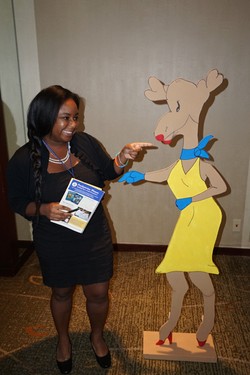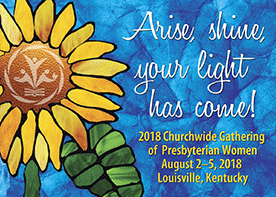
While the Gathering had many serious moments, many participants stopped for photos with Minnie, the official Gathering moose-cot. Photo by Michael Martin.
Laughter—A healing art
By Hillary Moses Mohaupt
Thomas Willadsen amused a full room on Friday morning during his 2015 Churchwide Gathering workshop on the healing art of laughter. Thomas Willadsen, the pastor at First Presbyterian Church in Oshkosh, Wisconsin, and author of OMG! LOL! Faith and Laughter, spent much the session describing the difference between laughter and humor—and illustrating the role laughter plays in effective communication between people. “Senses of humor,” he said, “are like senses of smell and senses of wonder. They differ enormously.”
Using evidence from scripture and anecdotes from his life as a father and pastor, Thomas traced the idiosyncrasies of humor in the Bible. He quoted both Anne Lamott, who has said that “laughter is carbonated holiness,” and Karl Barth, who once wrote that “laughter is the closest thing to the grace of God.”
Thomas pointed to three kinds of laughter in the Old and New Testaments: most commonly as an expression of superiority or derision, then as an emotional release as important and powerful as tears, and, finally, as a response to humorous incongruities. Humor is most evident among the disciples, whom Thomas characterizes as twelve of the “densest men in the first century.” Their errors, however, are good lessons for modern Christians, who can read Jesus’ patience in a humorous light. Willadsen also noted the story of Isaac’s birth, which depends almost entirely on different kinds laughter: Abraham’s worshipful laughter, Sarah’s laughter of disbelief, even Isaac’s very name.
While he brought down the house throughout the program, Willadsen solemnly observed that humor can be used as both a tool for communication—for driving home an important point in a sermon or releasing the tension in a difficult conversation—and as a weapon—something used to to control or hurt people.

